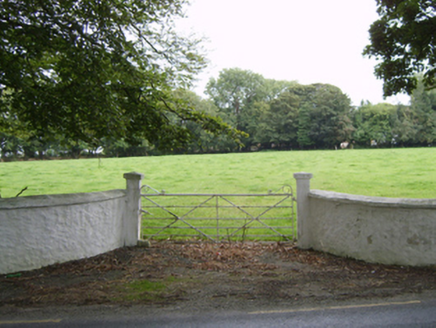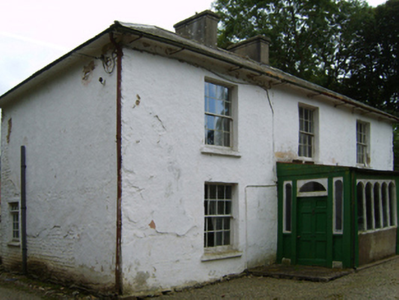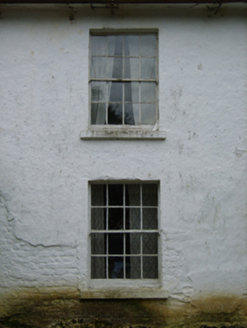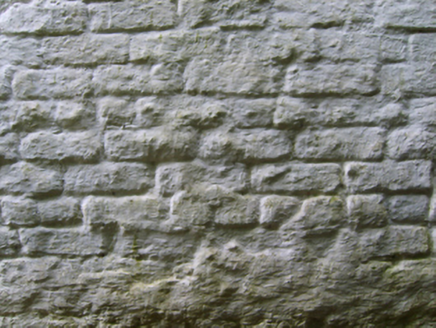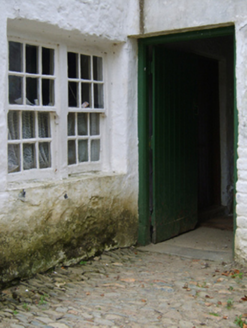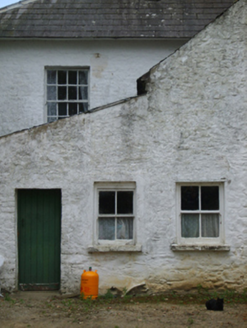Survey Data
Reg No
15704050
Rating
Regional
Categories of Special Interest
Architectural, Artistic, Historical, Social
Original Use
Farm house
In Use As
Farm house
Date
1842 - 1889
Coordinates
286231, 113877
Date Recorded
06/09/2007
Date Updated
--/--/--
Description
Detached three-bay two-storey farmhouse, extant 1889, on a T-shaped plan centred on single-bay single-storey lean-to projecting porch to ground floor; single-bay (two-bay deep) two-storey lower central return (east). Occupied, 1901; 1911. Sold, 1919. Resold, 1928. Hipped slate roof on a T-shaped plan centred on pitched slate roof (east), clay or terracotta ridge tiles extending into pressed or rolled iron ridges, paired rendered central chimney stacks having corbelled stepped chamfered capping with red brick Running bond chimney stack (east) having lichen-covered capping, and cast-iron rainwater goods on slightly overhanging limewashed slate flagged eaves retaining cast-iron downpipes. Limewashed lime rendered red brick Flemish bond walls. Central door opening into farmhouse. Square-headed window openings with cut-granite sills, and concealed dressings framing eight-over-eight timber sash windows. Interior including (ground floor): central hall retaining carved timber surrounds to door openings framing timber panelled doors; and carved timber surrounds to door openings to remainder framing timber panelled doors with timber panelled shutters to window openings. Set in landscaped grounds with limewashed panelled piers to perimeter having shallow pyramidal capping supporting wrought iron-detailed flat iron "farm gate".
Appraisal
A farmhouse representing an important component of the mid nineteenth-century domestic built heritage of south County Wexford with the architectural value of the composition confirmed by such attributes as the compact plan form centred on a restrained doorcase, albeit one largely concealed behind a later porch; and the very slight diminishing in scale of the openings on each floor producing a feint graduated visual impression. Having been reasonably well maintained, the elementary form and massing survive intact together with substantial quantities of the original fabric, both to the exterior and to the interior, thus upholding the character or integrity of the composition. Furthermore, adjacent outbuildings (----) continue to contribute positively to the group and setting values of a self-contained ensemble having historic connections with the Handcock family including John Little Handcock (d. 1942), 'Farmer' (NA 1901; NA 1911).
